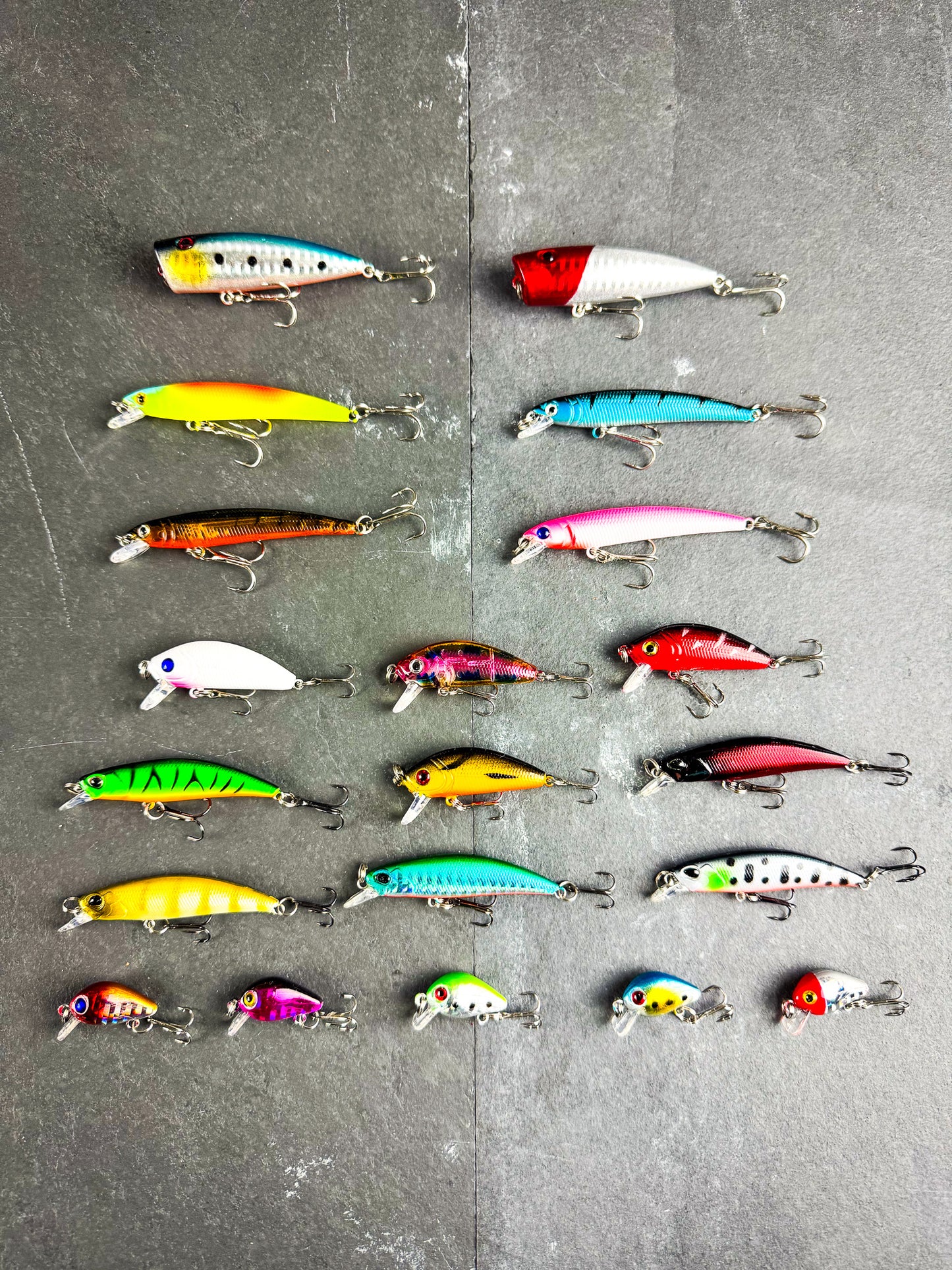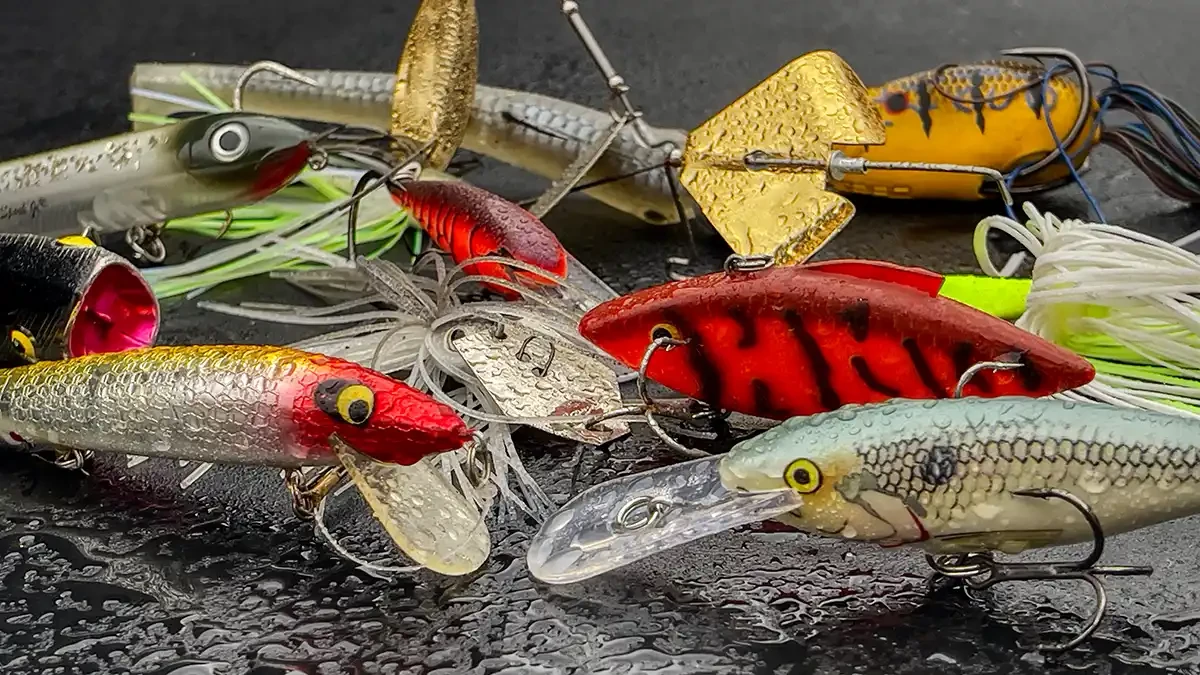How to Read Water Conditions to Pick the Right Perfect Bass Lures
Wiki Article
Discover the Ideal Methods for Picking Bass Lures for Your Following Fishing Trip
Picking the right bass Lures can substantially affect fishing success. Anglers should consider different factors, such as seasonal patterns and water clearness. Comprehending bass habits is vital (Best Bass Lures South Africa). Picking Lures that simulate natural target can lead to much better results. Many are not sure about the ideal techniques to implement. What approaches should one prioritize to enhance their angling experience? The answers depend on examining specific problems and adapting appropriatelyUnderstanding Bass Habits and Habitat
Comprehending the nuances of bass habits and environment is essential for any kind of angler intending to enhance their fishing success. Bass are frequently found in numerous settings, including lakes, rivers, and storage tanks, where they seek framework such as immersed rocks, greenery, and dropped trees. Their behavior is greatly affected by water temperature, light degrees, and available forage.During warmer months, bass have a tendency to be extra energetic, frequently inhabiting shallower waters, while in colder months, they pull back to much deeper areas. Additionally, bass display patterns of feeding, often being much more hostile throughout dawn and dusk. They are opportunistic predators, exploiting smaller sized fish, pests, and crustaceans. Comprehending these elements can assist fishermens recognize prime angling areas, as well as the most effective times to fish. Recognizing bass habits in regard to their environment is essential for effective angling, guiding fishermens in making educated decisions regarding where to cast their lines.
Matching Lures to Seasonal Conditions
As anglers adjust their techniques to changing periods, matching Lures to seasonal conditions comes to be an important method for boosting fishing success. In spring, when bass are emerging from winter dormancy, fishermens usually utilize spinnerbaits and shallow-running crankbaits to resemble the activities of victim. Summertime demands a shift to topwater Lures or soft plastic worms, as bass look for shade and cooler waters. Throughout the loss, when bass are fattening up prior to winter months, bigger Lures that copy baitfish can be effective. Winter months asks for a much more subtle approach; jigs and slow-moving skill lures commonly yield far better outcomes as bass end up being tired. Recognizing these seasonal patterns assists anglers pick the ideal attractions, thus enhancing their chances of an effective catch. By lining up attraction selections with the all-natural behavior of bass throughout the year, fishermens can maximize their angling experience and enhance their overall success on the water.The Relevance of Color Selection
Shade selection plays an essential duty in bass fishing, as it can considerably impact a fisher's success. Factors such as water quality, seasonal adjustments, and the certain preferences of different bass species all influence which colors are most effective. Comprehending these aspects allows anglers to make enlightened selections that enhance their angling experience.
Water Clarity Factors To Consider
When the water clarity differs, picking the appropriate bass attraction shade comes to be crucial for attracting fish. In clear water, all-natural colors such as shad or bluegill patterns have a tendency to be more efficient, as they resemble the prey bass are accustomed to seeing. Alternatively, in dirty or stained water, brighter colors like chartreuse or fire tiger can boost exposure, making it simpler for bass to spot the lure. The comparison in between the attraction and the surrounding setting plays a significant duty in angling success. Fishermens ought to likewise take into consideration the time of day; lighter colors might work better in bright sunshine, while darker tones can be more efficient throughout low-light problems. Adjusting attraction shade to water quality enhances the opportunities of a successful catch.Seasonal Color Patterns
Exactly how do seasonal modifications impact bass actions and attraction effectiveness? As temperature levels shift throughout the year, bass adjust their feeding practices and liked environments, making shade option essential for successful angling. In springtime, when bass generate, brilliant shades like chartreuse can stand out. Summer season months often call for even more all-natural tones, such as environment-friendly pumpkin or shad patterns, as bass look for to assimilate with their surroundings. During loss, vivid shades like orange and red simulate the altering foliage, luring bass as they get ready for winter season. In winter, subdued tones such as white or gray may be extra effective, as bass end up being inactive. Inevitably, understanding seasonal color scheme makes it possible for anglers to select Lures that resonate with bass's existing actions, improving their possibilities of success.
Species-Specific Preferences
Recognizing species-specific preferences is crucial for fishermens looking to optimize their lure selection. Different bass types, such as largemouth and smallmouth, show unique color preferences based on their environment and feeding habits. Largemouth bass frequently prefer darker colors, specifically in murky waters, where shades like dark and black environment-friendly imitate all-natural target. In contrast, smallmouth bass are more probable to reply to brighter colors, such as chartreuse and orange, particularly in clear waters. In addition, water clarity and light conditions can influence these preferences, making it essential for fishermens to adapt their appeal shade as necessary. By thinking about these species-specific preferences, anglers can enhance their chances of a successful fishing journey, eventually improving their overall experience on the water.Selecting the Right Lure Kind for Various Situations
Choosing the proper attraction kind for numerous angling situations is important for success on the water. Fishermens have to think about aspects such as water clearness, weather condition conditions, and the bass's feeding habits. For dirty water, darker-colored appeals, such as jigs or spinnerbaits, can be effective, as they develop a solid silhouette. In clear water, natural-colored Lures like soft plastics or topwater lures might lure wary bass.When fishing in hefty cover, using weedless rigs or hefty jigs can assist navigate with challenges without visit our website snagging. Alternatively, open water circumstances might gain from crankbaits or swimbaits that can cover better distances. In addition, throughout cooler months, slower-moving Lures tend to be extra efficient, while warmer problems may ask for faster retrieves. By adapting lure selections to specific settings, anglers boost their chances of an effective catch.
Try out Dimension and Activity

Fishermens usually trying out a series of actions and dimensions to establish what jobs best under varying problems. A slow-moving, subtle activity could be ideal in chillier water, while a quickly, hostile fetch might be much more effective in warmer temperature levels. By carefully observing the bass's reactions to these variants, fishermens can improve their strategy and raise their possibilities of an effective catch. Ultimately, the ideal mix of size and action can make a considerable difference on the water.
Checking Out Water Problems for Better Tempt Choices
Recognizing water conditions is important for choosing the best bass appeal. Factors such as water clearness and temperature can significantly influence fish actions and feeding patterns. By examining these problems, fishermens can make enlightened decisions that improve their chances of a successful catch.Assessing Water Clearness
Exactly how does water quality influence the performance of bass appeals? Water quality significantly impacts bass actions and the visibility of appeals. In clear water, bass tend to be more careful, making natural-colored Lures extra reliable as they resemble prey carefully. Fishermens may pick lighter, subtler colors to stay clear of scaring fish. Conversely, in dirty or discolored water, more vibrant and more dynamic shades stand apart, standing out even in low visibility conditions. Furthermore, the sort of attraction can vary; slower-moving Lures might work better in clear water, while much faster, a lot more hostile presentations can lure bass in murkier atmospheres. Comprehending the clarity of the water enables fishermens to select Lures that maximize their opportunities of success during their fishing expedition.Recognizing Water Temperature Level
As water temperature varies, it straight affects bass actions and their feeding patterns, making it important for fishermens to consider when selecting lures. Generally, bass choose warmer temperatures, usually in between 65 ° F and 75 ° F, where their metabolism is enhanced, resulting in enhanced feeding task. In cooler water, bass become sluggish and may choose slower-moving attractions, such as jigs or soft plastics. Alternatively, throughout warmer months, faster presentations like crankbaits or topwater Lures can be much more effective. Fishermens need to additionally consider seasonal adjustments; as an example, spring warming results in aggressive feeding as bass prepare to generate. By comprehending how temperature level impacts bass, anglers can make educated choices on lure choice, significantly enhancing their chances of success.Tips for Organizing and Maintaining Your Lure Collection
While several anglers concentrate on selecting the ideal Lures for their next angling journey, maintaining an attraction and arranging collection is just as important for boosting efficiency and performance. A well-structured collection allows anglers to rapidly find the Lures they need, minimizing time spent rummaging via tackle boxes.To begin, anglers must classify Lures by type-- crankbaits, jigs, or soft read this plastics-- making it simpler to discover specific alternatives. Utilizing take on trays or boxes with flexible areas can assist keep every little thing arranged. Identifying containers simplifies the process additionally, aiding fast recognition.
Normal upkeep is additionally critical; anglers should evaluate Lures for indications of wear, such as rusted hooks or harmed paint, and replace them as essential. Cleaning up Lures after each trip stops degeneration and ensures long life. By applying these organizational and maintenance approaches, fishermens can improve their fishing experience and ensure their Lures are constantly in optimal condition.
Often Asked Inquiries
What Are the Best Brands for Bass Lures?
The most effective brand names for bass Lures include Rapala, Strike King, and Berkley. These brands are renowned for their innovation, high quality, and effectiveness, attracting both amateur and seasoned fishermens looking for effective angling experiences.The Amount Of Lures Should I Take on a Journey?
A normal angling journey should include around five to 10 lures, permitting adaptability while avoiding clutter. This selection should encompass various types and shades to adjust to changing conditions and fish preferences.Can I Make My Own Bass Lures?
Yes, individuals can make their own bass Lures making use of various materials and techniques - Best Bass Lures South Africa. Crafting Lures allows for customization, making it possible for anglers to experiment with forms, sizes, and colors to suit details angling problems and preferencesWhat's the Ordinary Lifespan of a Bass Entice?
The typical life-span of a bass appeal varies, usually lasting from a few months to several years, relying on material quality, use regularity, and environmental problems. Correct treatment can dramatically expand an appeal's use.Exist Particular Lures for Evening Angling?
Yes, there specify Lures made for evening angling. Dark shades and Lures that create vibrations, such as spinnerbaits or jigs, often bring in bass in low-light problems, boosting visibility and triggering predative instincts.Conversely, in dirty or stained water, brighter colors like chartreuse or fire tiger can enhance visibility, making it easier for bass to spot the lure. Bigger Lures can attract bigger bass, while smaller sized Lures may be more reliable for catching smaller sized fish. Additionally, the type of attraction can differ; slower-moving Lures could function much better in clear water, while much faster, a lot more aggressive you can try this out discussions can attract bass in murkier environments. As water temperature fluctuates, it directly influences bass behavior and their feeding patterns, making it crucial for anglers to consider when choosing attractions. While several anglers concentrate on choosing the appropriate Lures for their next fishing trip, maintaining an attraction and arranging collection is just as vital for boosting performance and efficiency.
Report this wiki page